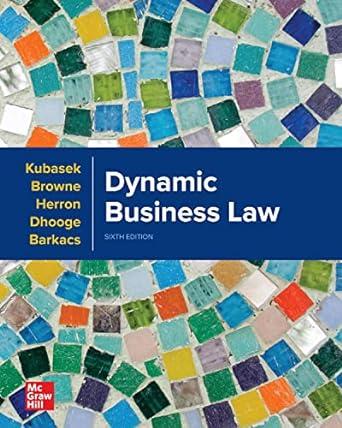On October 20, 1999, a group of 19 private organizations filed a rule-making petition asking the Environmental
Question:
On October 20, 1999, a group of 19 private organizations filed a rule-making petition asking the Environmental Protection Agency (EPA) to regulate “greenhouse gas emissions from new motor vehicles” under the Clean Air Act.1 The petitioners cited the fact that 1998 was the “warmest year on record,” that greenhouse gas emissions have significantly accelerated climate change, and that carbon dioxide is the most important human-made contribution to climate change. Fifteen months after the petition was filed, the EPA requested public comment on the issues. Then, on September 8, 2003, the EPA entered an order denying the rule-making petition, citing two reasons: (1) The Clean Air Act does not authorize the EPA to issue mandatory regulations to address global climate change; and (2) even if the agency had authority, it would be unwise to have done so at that time. The case, Massachusetts v. EPA, eventually worked its way to the US Supreme Court, which had to decide whether the EPA was improperly failing to regulate carbon dioxide gas in automobile exhaust as a climate-changing pollutant.
1. What is rule making, and how does it work?
2. What limits, if any, exist on an agency’s authority to regulate?
3. When may the courts review an agency decision?
Step by Step Answer:

Dynamic Business Law
ISBN: 9781260733976
6th Edition
Authors: Nancy Kubasek, M. Neil Browne, Daniel Herron, Lucien Dhooge, Linda Barkacs





